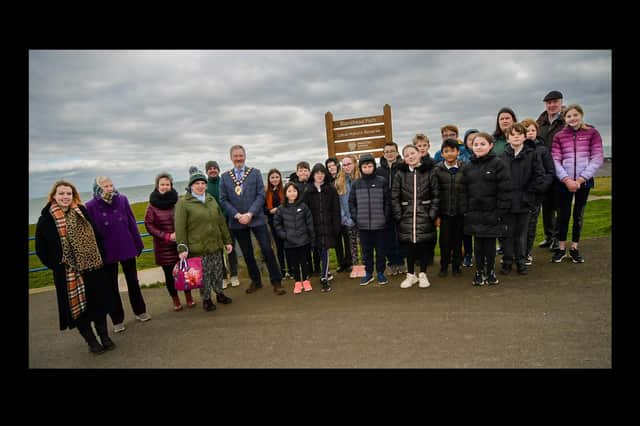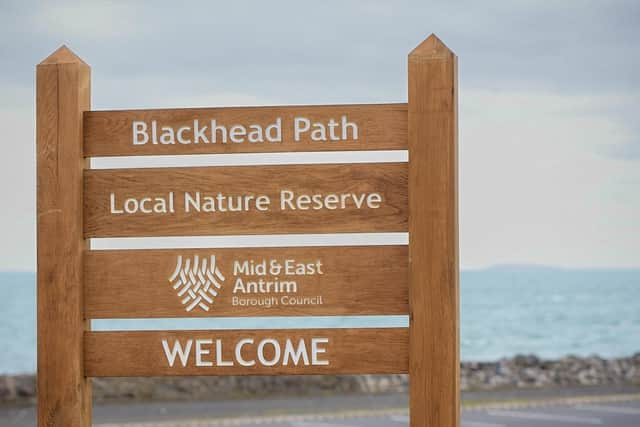Blackhead Path officially opens as Local Nature Reserve


Mayor of Mid and East Antrim, Cllr William McCaughey thanked everyone who contributed to the designation of the Local Nature Reserve status, namely, the Council for Nature Conservation and the Countryside (CNCC), the Northern Ireland Environment Agency Biodiversity Unit, DAERA, ecologists Dave Allen, Roy Anderson and Ian Enlander, the Friends of Blackhead Path, and Council staff.
Cllr McCaughey said: “A Local Nature Reserve is a protected area of land designated by a local authority to conserve its environmental and recreational value, with the primary land use being for conservation. This site demonstrates Council’s commitment to conserving and enhancing biodiversity throughout the Borough and our commitment to protecting green space for the community. This site is hugely important for environmental education and recreational enjoyment and I hope everyone will continue to enjoy this special green space for many years to come, and that wildlife will continue to thrive here.”
Advertisement
Hide AdAdvertisement
Hide AdDr Hilary Kirkpatrick, Chair of the Council for Nature Conservation and the Countryside (CNCC) added: “Members enthusiastically endorsed the declaration of this site as a Local Nature Reserve by Mid and East Antrim Council. Members endorsed the importance of the site in terms of the species present and the geological interest and were particularly impressed by the level of community and volunteer support that the site had attracted.


"Local Nature Reserves provide accessible nature on a community's doorstep, and this site is great example of this, providing opportunity for health and wellbeing and giving people an opportunity to enjoy and appreciate nature.”
'Wide variety' of bird life
The Friends of Blackhead Path have been working alongside the council and ecologists for the past year, surveying the site. "We were pleased to see such a wide variety of bird life on and off shore including fulmar, curlew, lapwing, purple sandpiper, oystercatcher, dunlin, snipe, redshank and eider," Friends of Blackhead Path's Simon Wheeler said.
"We were also pleased to find a rare 24 spot ladybird, perhaps now only found here, as well as evidence of the Cryptic Wood White butterfly, which is a priority species. We will continue to work alongside Council and ecologists to improve the habitat on site and hope to increase the population over time.”


Advertisement
Hide AdAdvertisement
Hide AdThe geology of Blackhead Path is also worth noting, said Ian Enlander from Friends of Blackhead Path. "It is dominated by Palaeogene basalt, some 60 million years old, but rocks belonging to two older geological periods are sporadically exposed being Cretaceous limestone, approximately 100 million years old, and Triassic mudstones, approximately 200 million years old," he said.
"The Triassic mudstones can be seen at low tide. More recently, the effects of glaciation can be seen with the deposition of the large basalt boulders known locally as the Wrens Eggs. It is not clear how far these may have been transported, or indeed when they were deposited, but their scale clearly indicates that ice movement was involved. Most likely these date from the last advance of Scottish ice, some 15,000 years ago.”